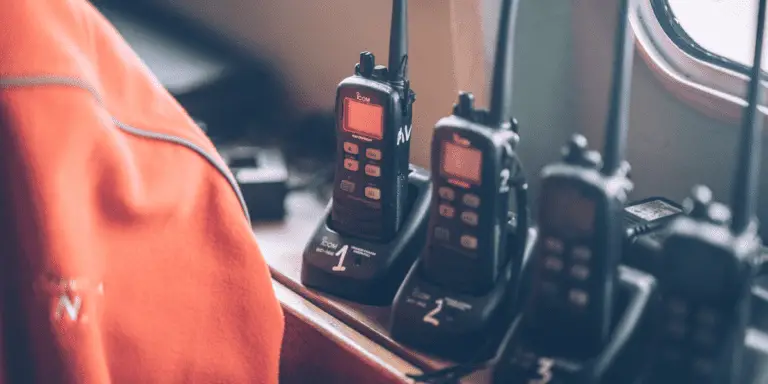what frequency do walkie-talkies use?
Walkie-talkies are popular communication devices that allow people to stay in touch over short distances. However, not all walkie-talkies are created equal – one important factor to consider is the frequency with that they operate on.
Understanding the frequency used by walkie-talkies is important for both the user and the manufacturer, as it can affect the range and clarity of communication, as well as the potential for interference from other devices.

In this post, we’ll take a closer look at the different frequencies used by walkie-talkies and the advantages and disadvantages of each.
Overview of frequencies used by walkie talkies
Walkie-talkies operate on specific radio frequencies, which are regulated by government agencies such as the Federal Communications Commission (FCC) in the United States. There are two main frequency bands used by walkie-talkies: VHF (very high frequency) and UHF (ultra-high frequency).
VHF frequencies are in the range of 30 MHz to 300 MHz and are typically used for long-range communication. Walkie-talkies operating on VHF frequencies have a longer range than those operating on UHF frequencies, but they are also more susceptible to interference from other devices and environmental factors such as buildings and hills.
UHF frequencies are in the range of 300 MHz to 3 GHz and are typically used for short-range communication. Walkie-talkies operating on UHF frequencies have a shorter range than those operating on VHF frequencies, but they are less prone to interference and tend to work better in urban environments with lots of buildings and other structures.
It’s important to note that different frequency bands may be used in different countries, depending on the regulations in place. For example, some countries may only allow the use of UHF frequencies for walkie-talkies, while others may allow the use of both VHF and UHF frequencies.
Advantages and disadvantages of different frequencies
When choosing the frequency for a walkie-talkie, it’s important to consider the advantages and disadvantages of each. VHF frequencies have a longer range but are more susceptible to interference, while UHF frequencies have a shorter range but are less prone to interference.
One advantage of VHF frequencies is that they can penetrate buildings and other structures better than UHF frequencies, making them a good choice for outdoor communication. They are also less crowded than UHF frequencies, which can lead to fewer disruptions and clearer communication.
On the other hand, UHF frequencies are better suited for urban environments with lots of buildings and other structures, as they are less likely to be blocked or disrupted by these obstacles. They are also less crowded than VHF frequencies, which can lead to fewer disruptions and clearer communication.
Ultimately, the frequency that is best for a particular walkie-talkie will depend on the intended use and the environment in which it will be used. It’s important to consider these factors when choosing the frequency for a walkie-talkie to ensure the best possible performance.
Factors to consider when choosing a frequency
When choosing the frequency for a walkie-talkie, there are several factors to consider. These include:
- Intended use: The frequency that is best for a walkie-talkie will depend on how it will be used. For example, VHF frequencies may be a better choice for outdoor communication, while UHF frequencies may be better suited for urban environments with lots of buildings and other structures.
- Environment: The frequency that is best for a walkie-talkie will also depend on the environment in which it will be used. For example, VHF frequencies may be more suitable for outdoor communication in rural areas, while UHF frequencies may be better suited for urban environments with lots of buildings and other structures.
- Distance between users: The distance between the users of a walkie-talkie can also affect the frequency that is best for a particular device. VHF frequencies have a longer range than UHF frequencies, so they may be a better choice for communication over longer distances. However, UHF frequencies may be less prone to interference, making them a better choice for communication over shorter distances.
By considering these factors when choosing the frequency for a walkie-talkie, users can ensure the best possible performance and communication clarity.
Conclusion
In summary, the frequency used by walkie-talkies is an important factor to consider when purchasing or using these devices. Walkie-talkies operate on specific radio frequencies, which are regulated by government agencies and can affect the range and clarity of communication, as well as the potential for interference from other devices.
VHF frequencies have a longer range but are more susceptible to interference, while UHF frequencies have a shorter range but are less prone to interference.
There are several factors to consider when choosing the frequency for a walkie-talkie, including the intended use, the environment, and the distance between users.
By understanding the frequency used by walkie-talkies and considering these factors, users can ensure the best possible performance and communication clarity.






